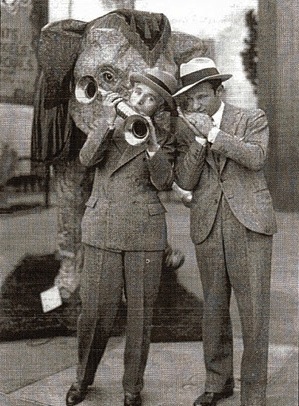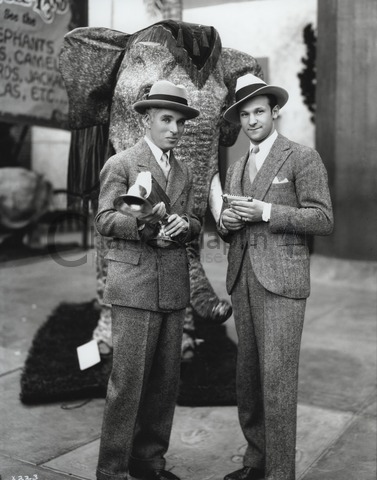Image may be NSFW.
Clik here to view. Image may be NSFW.
Image may be NSFW.
Clik here to view.
Clik here to view.
 Image may be NSFW.
Image may be NSFW.Clik here to view.

 Image may be NSFW.
Image may be NSFW.
 Image may be NSFW.
Image may be NSFW.
 Image may be NSFW.
Image may be NSFW.
| Image may be NSFW. Clik here to view.  |
| Florence Deshon, c.1918 |
| Image may be NSFW. Clik here to view.  |
| CC, Max Eastman, and Isaac McBride at the Chaplin Studios, 1919 |
Charlie is always very sweet to me.
I dined with Charlie on Christmas Eve, and he gave me a Christmas present.
Beloved, Charlie came to dinner last night and I gave him your book. He was so happy to get it. I saw his picture The Kid in the projection room. I was wonderful, wonderful. I cried and laughed and smiled and worried. It was the most exciting thing I ever saw.
Charlie is all excited about buying a yacht. He said, "Let's you and Max and Elmer [Ellsworth?] and I go off together." I said we would make movies in all the countries we touched, and he is enthusiastic about your acting in them. Well, we had a wonderful time. Anyhow, as soon as he finishes this picture he asked if I would take a trip in his car. We all the the wanderlust very strongly and were flying all over the world.4
Charlie speaks ever of going away, but it all depends on his picture and at the rate he is working, he will never finish it. I know I am naughty, but I become tired of Charlie's matrimonial troubles. He stays in that frightful situation at this home, and his powerlessness to move wears me out. I did not go with him to meet [Jascha] Heifetz as there were too many people there. I would rather meet Heifetz with Dagmar Godowsky.
Did I tell you that I met the French comedian, Max Linder? I spent the day at Charlie's studio, and he had a lot of callers that day. Linder is smaller than Charlie and very good looking and well dressed. He is a very sweet little fellow and Charlie was quite jealous of him for a few minutes. Then he went into his dressing room, and Charlie pulled off his cap and roughed his hair and you know he always looks charming that way. He caught a fleeting vision of himself in the glass and all was right with the world again, not because he is striving for perfection, but because something in him refuses to go forward. 5Another reason for Max's calm may have been his budding relationship with dancer Lisa Duncan, who had moved into his house in Croton. When Florence learned of Max's new relationship, the "Black Panther" (as he called it) side of her personality came out. Although Max was still in love with Florence, he was not capable of being with just one woman.
| Image may be NSFW. Clik here to view.  |
| Florence Deshon and Max Eastman |
"I was passing a firehouse one day, for example, and heard a fire alarm ring in. I watched the men sliding down the pole, climbing onto the engine, and rushing off to the fire. At once a train of comic possibilities occurred to me. I saw myself sleeping in bed, oblivious to the clanging of the fire bell. This point would have a universal appeal, because everyone likes to sleep. I saw myself sliding down the pole, playing tricks with the fire horses, rescuing the heroine, falling off the fire engine as it turned a corner, and many other points along the same lines. I stored these points away in my mind and some time later, when I made The Fireman, I used every one of them. Yet if I had not watched the firehouse that day the possibilities in the character of a fireman might never have occurred to me." (Charles Chaplin, "What People Laugh At,"American, November 1918)Certain scenes in The Fireman were filmed at an actual Los Angeles fire house. The two burning houses shown in the film were studio-created facades, not real condemned houses which Mutual claimed in its publicity at the time. However it's remarkable to watch Chaplin climb the three-story set in one take.
| Image may be NSFW. Clik here to view. |
| Sydney Chaplin is second from left. |
| Image may be NSFW. Clik here to view. |
| Photo of Chaplin supposedly taken at Nanaimo Harbor, B.C., June 1932 |
Chaplin doesn't look much like his motion picture self. The hair of his broad, finely modeled head is almost white. His large, luminous blue eyes are serious. Sartorially, he was a "rhapsody in blue." A double-breasted serge suit of navy blue. Blue tie. Blue shirt. Small blue veins show in the skin of a rather pallid face.
But he displayed one characteristic gesture when he was telling of how reporters and photographers chased him everywhere in Japan.
"It was really embarrassing," he said. "I'd be looking in a shop window, or I'd stop a moment on the street and there they would be." He jumped from his chair and pantomimed the figure of a press cameraman, crouched over his camera.
"Being trailed that way makes me terribly self-conscious."After spending the day in and around Vancouver, Charlie will sail for Seattle in the evening, arriving the next morning. So more on that tomorrow.
Image may be NSFW.
Clik here to view.Charlie poses on the deck of the Hikawa Maru in Seattle.
Seattle at last! I am interviewed by the press. Everyone seems warm and friendly. Something has happened to America since I've been away. That youthful spirit born of prosperity and success has worn off and in its place there are a maturity and sobriety. 1
| Image may be NSFW. Clik here to view.  |
| Charlie is "interviewed by the press" |
| Image may be NSFW. Clik here to view.  |
| The Day Book (Chicago, IL), August 15, 1915 |
| Image may be NSFW. Clik here to view.  |
| Chaplin at the Southern Pacific Railroad station in Los Angeles, June 16, 1932 |
The trail is nearly over and I am returning to Hollywood. Looking back on my holidays leaves me with an outstanding impression. Europe and the different countries I visited, embroiled in unrest, seem brewing a new epoch--theistic, sociological, and economical--unprecedented in the history of civilization. It animates me with a desire for accomplishment--not in the old way but in something new; perhaps another field of endeavor. ...
As I journey from Seattle to Hollywood. passing through the rich farmland of Washington, the dense pine forests of Oregon and on into the vineyards and orchards of California, it seems impossible to believe ten million people wanting when so much real wealth is evident.
Nevertheless I am glad to be back in America. I'm glad to be home in Hollywood. Somehow I feel that in America lies the hope of the whole world. For whatever takes place in the transition of this epoch-making time, America will be equal to it.1Charlie was met at the train station by his old friend and manager, Alf Reeves. He was briefly interviewed by the press although he had more questions for the interviewers than they had for him. He wanted to know about conditions in the motion picture industry and about certain friends, pointing out that he had been away for a long time. "It was the first good rest in twenty years," Charlie told them, "but I still feel sorry for a goldfish, for that's about how much privacy I got. But everywhere I went they were marvelous to me."2
| Image may be NSFW. Clik here to view.  |
| There is a very similar scene between Bugs Bunny and Christopher Columbus in the 1951 cartoon Hare We Go. |
I was told before I met him that I should find him shy. He's nothing of the sort though possibly, not being an awe-inspiring sort of person, I didn't impress him that way. I only know him as a man of charming manners and very rare mentality who possesses a fund of interesting conversation and a social ease which would place him on an equal footing with any man on earth.
I told him of his reputation for shyness, and he smiled.
"No, I'm not shy," he said, "only timid; a big difference, you know."
...a little chap, slender and beautifully proportioned, with small feet and exquisite, expressive little hands. His most striking feature are a pair of clear, deep-blue eyes, fringed with long, dark eyelashes — eyes that reflect every passing thought and emotion, that alternately dream and twinkle, eyes that have the candor and sincerity of a child, but also the fire of a real man's enthusiasm for real big things.
It is very grateful to English ears to listen to Chaplin's well-bred English voice and clear-cut speech in the midst of every variety of American accent. Beyond the use of an occasional transatlantic idiom, he talks like the average cultured Englishman who has just landed in the States.
"We're keeping it up as long as we can, he explained. "It's so pretty that I hate to pull it down but I'm afraid that it will soon have to go to make room for another set."
"We're keeping it up as long as we can, he explained. "It's so pretty that I hate to pull it down but I'm afraid that it will soon have to go to make room for another set."
| Image may be NSFW. Clik here to view.  |
| Charlie with the same man in a photo from the Chaplin Archive Image Bank. |